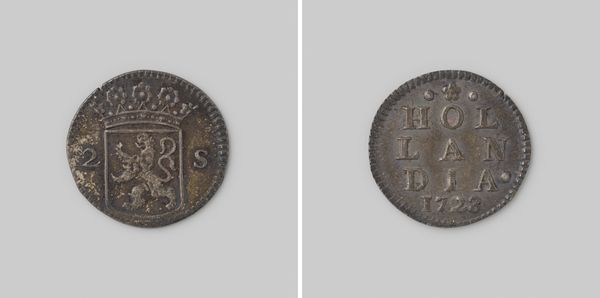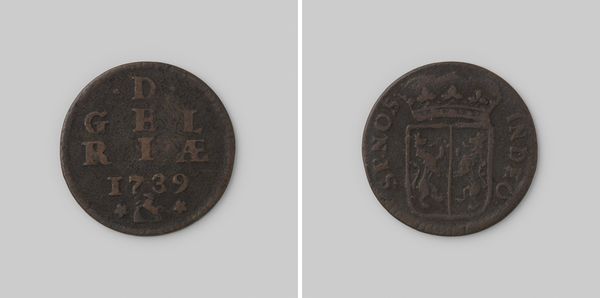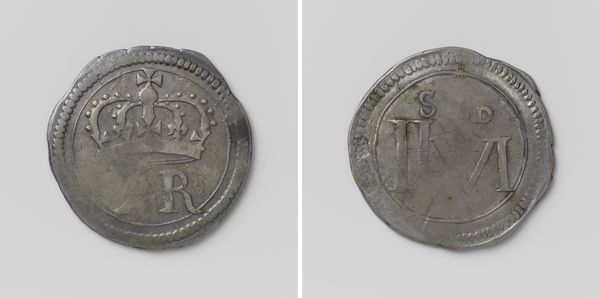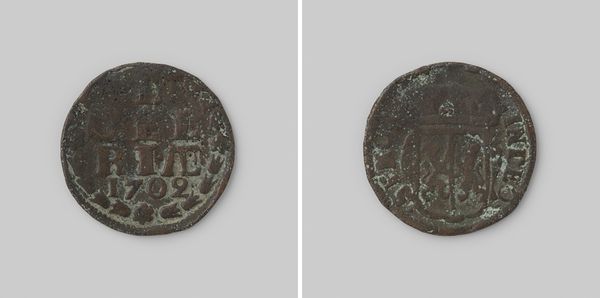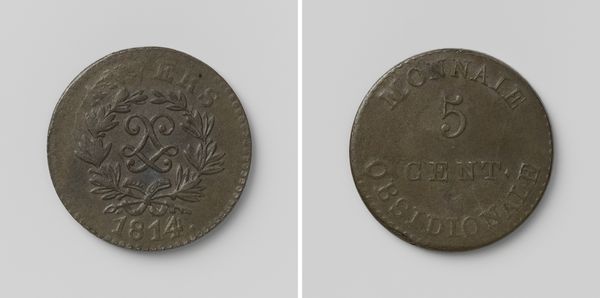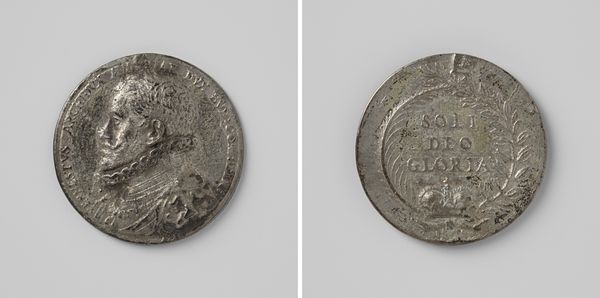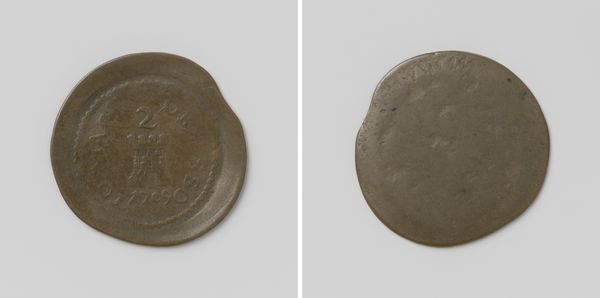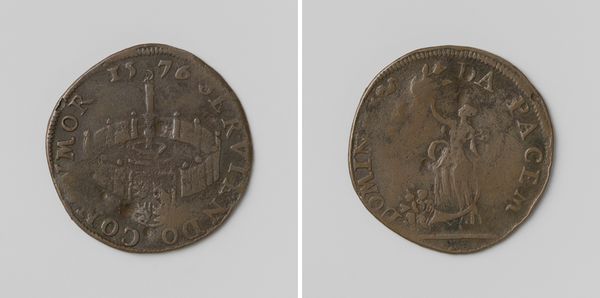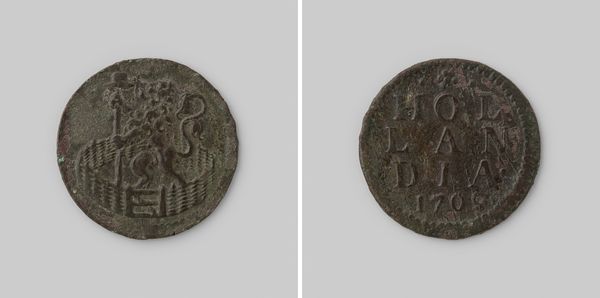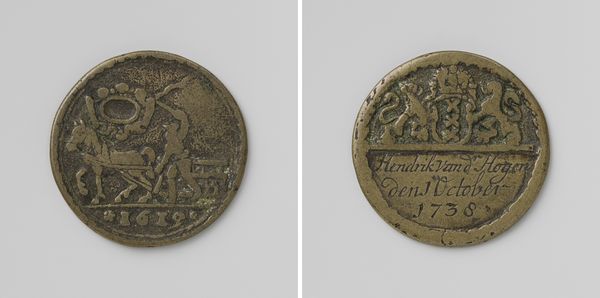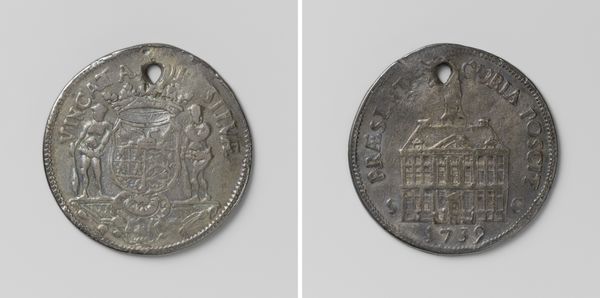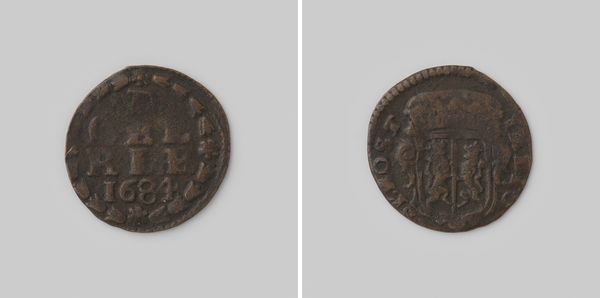
print, metal, relief, bronze, engraving
# print
#
metal
#
sculpture
#
relief
#
bronze
#
ancient-mediterranean
#
history-painting
#
engraving
#
miniature
Dimensions: diameter 3.1 cm, weight 7.83 gr
Copyright: Rijks Museum: Open Domain
Curator: Here we have an intriguing example of an early 18th-century "need money," or emergency coinage: a "tien poltura" issued in 1706 during the Hungarian uprising led by Frans Ragotzky. It appears to be a print made on metal, possibly bronze. Editor: Immediately, the stark, almost crude engraving strikes me. There's a sense of urgency conveyed through the rough texture and the minimalist design, hinting at the very circumstances of its creation. It feels…raw. Curator: The piece certainly carries a powerful weight, doesn't it? On one side, we see a crowned shield with heraldic symbols, flanked by the year 1706. This heraldry evokes ideas of nobility and perhaps legitimacy even in a time of upheaval. Editor: And on the other, we see the inscription "Pro Libertate," or "For Liberty." Placed above what appears to be the Roman numeral for ten within a decorative flourish. So, it represents both a value and a cause, doesn't it? The liberty for which they fight. Curator: Precisely. And think about what "liberty" meant within that historical context: freedom from Habsburg rule, Hungarian self-determination. The crown suggests not an abdication of sovereignty, but perhaps a hope for a different kind of sovereign. Editor: Considering its size and function as currency, it's remarkable how dense it is with symbolic weight. Every element feels carefully chosen to communicate not just monetary value, but also political aspirations. The formal rendering suggests even during times of turmoil there is an innate desire for a certain structural visual rhetoric. Curator: Absolutely. It reminds us that even the smallest objects can carry profound historical narratives. The fact that they even cared for a proper crown atop the Hungarian coat-of-arms really speaks to that. Editor: A powerful object, bridging aesthetic simplicity and cultural density. The artist created meaning under great pressure to not only inspire those directly involved but relay a timeless sense of longing. Curator: A relic born of rebellion, a tangible reminder of a nation's yearning. Editor: A poignant micro-monument.
Comments
No comments
Be the first to comment and join the conversation on the ultimate creative platform.

